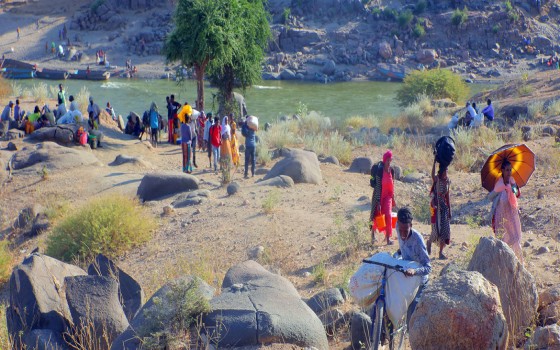
Climate change threatens fresh water resources .... Prepared by Dr. Abdel Moneim Sedky, Professor at the Agricultural Research Center - Egypt

- Europe and Arabs
- Wednesday , 16 August 2023 11:47 AM GMT
The world is suffering from pollution, global warming, extinction of plant and animal species, and a population explosion that doubles every 25 years. The quantities of water are shrinking significantly in most lakes and reservoirs around the world, and its causes are largely due to climate changes and global warming, as well as the unsustainable management of water resources.
Climate changes and the accompanying sharp rise in temperatures are among the most dangerous threats to fresh water resources globally, which lead to waves of drought and desertification as a result of the severe shortage of arable and drinking water. It also threatens the death of more than ten million people worldwide, most of them in Asia and Africa as well. On the increase in armed conflicts and mass displacement as a result of water scarcity. Many effects climate change can have on lakes and rivers. High temperatures, low water levels, or dry water have a negative impact on water quality. High temperatures lead to increased biological activity in water bodies, and therefore oxygen consumption, while decreasing the solubility of oxygen. Without enough oxygen, many aquatic organisms cannot survive. Alive and low water leads to an increase in the concentration of salts and phosphate compounds in the water and the pH value of the water becomes unbalanced. The environmental change in water bodies has a negative impact on the vital communities.
The scarcity of water used in agriculture is a catastrophe for many countries in which agriculture is the backbone of the country's economy and its main pillar on which economic, social and environmental development plans and programs depend, especially since agriculture accounts for 80% of the world's fresh water reserves, and crop water consumption is increasing in Africa and Asia due to high temperatures, and reliance on traditional methods of agriculture such as flood irrigation.
Africa is the most affected by the effects of climate change and its repercussions on fresh water resources. More than 300 million people on the continent do not have access to clean and sufficient water, and droughts and water scarcity caused the migration of millions of farmers to their agricultural lands, despite the multiplicity of water sources in Africa such as rivers and lakes, the most important of which are the Nile River, the Volta River, the Zambezi River and the Niger River. Africa is the least of the continents. In the world in providing clean or sanitary water services, more than half of its population suffers from diseases related to drinking water.
Most of the population of Asia and Africa live on less than 10 liters per day, which is a very low rate compared to the population of the rest of the countries affected by the water crisis in the world, in which the average daily per capita share is about 30 liters. The daily needs of the average individual are estimated at 50 liters, of which 5 liters are for drinking, 20 liters for sanitary uses, 15 liters for showering, and 10 liters for food preparation.
The main reason for the lack of fresh water resources in Africa is the drought, which has increased in severity as a result of the climatic changes taking place in the world. In Asia, it is due to the melting of glaciers in the Himalayas, which are the main source of fresh water, as glaciers supply Asian rivers with about 8.6 million cubic meters. annually, including the Yangtze River and the Yellow River in China, the Ganges River in India, the Indus River in Pakistan, the Brahmaputra River in Bangladesh, and the Arawadi River in Burma.
The continuation of the rate of melting of glaciers as it is, poses a great danger to the lives of the population, especially in South Asia, because they depend on glaciers for drinking water. The climate changes that the world will witness during the coming years will be the worst of its kind, and will result in severe shortages. In fresh water resources, in a way that makes agriculture impossible in many regions of the world, and leads to a significant rise in crop prices, which represents a real problem for hundreds of millions of people whose income does not exceed one dollar per day.
International and regional cooperation must be strengthened to achieve rational management of freshwater resources and their proper use, to shift to the use of less consuming crops, to address the overexploitation of water in agriculture, and to work to raise awareness among governments and citizens about the need to deal better with activities that lead to an increase in global warming. temperature and climate changes.












No Comments Found